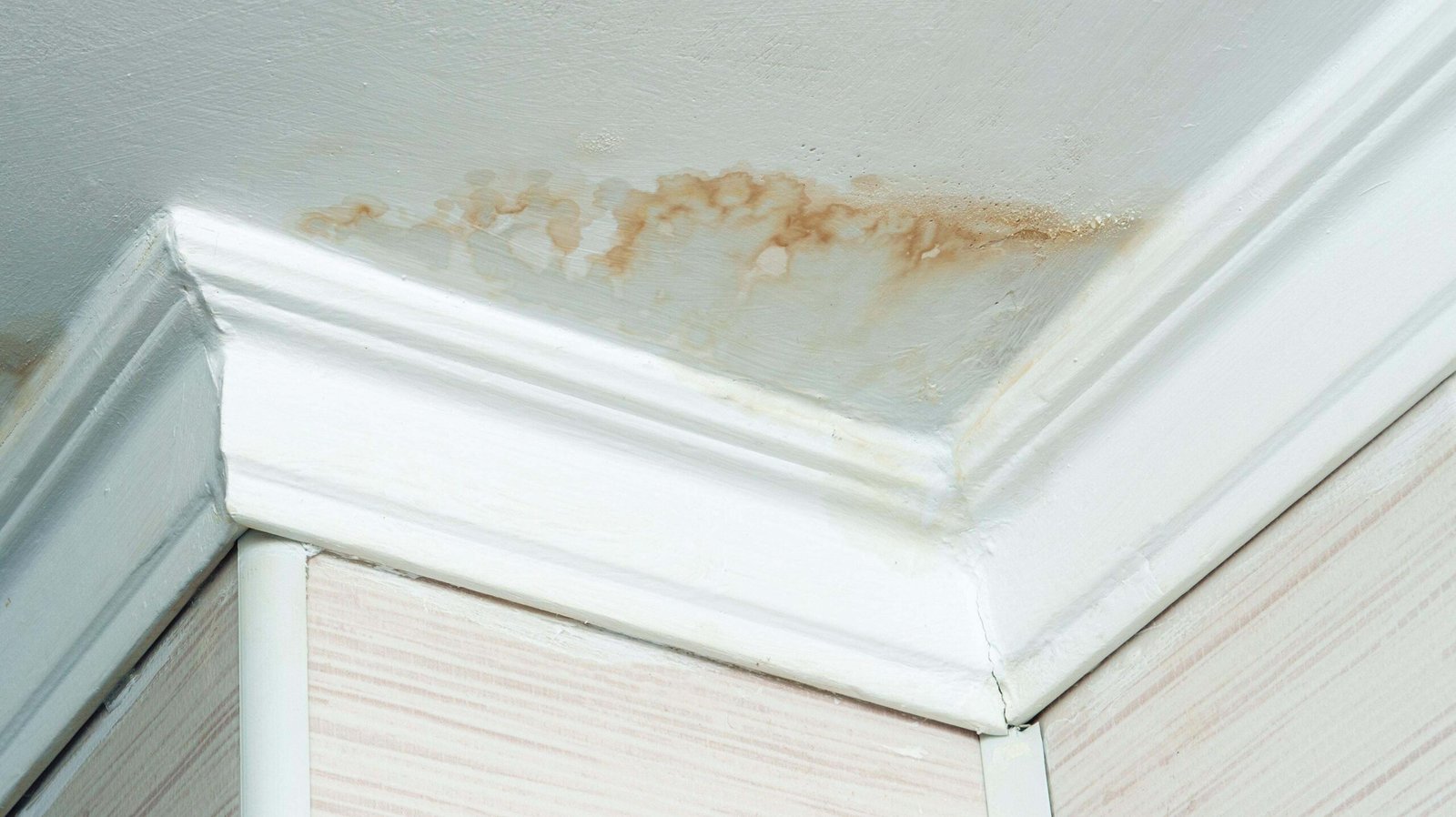We may earn a commission from links on this page.
Unsightly water stains will kill the vibes in even the most beautiful bathroom, to say nothing of what they do to the look of other parts of your home. From shower humidity to internal leaks and ventilation problems, these stains have all kinds of causes. But after you’ve identified what made the mark on your wall in the first place, you still need to remove it without making the problem worse.
Water stains typically won’t appear on tile; they need a more absorbent surface, which is why they show up on bare walls. Since your walls are probably painted, this presents a problem: How can you wash a wall without damaging it and risk needing to repaint the entire room? A few days ago, I was presented with this very issue when I noticed a water mark on my walls. How did it get there? Hell if I know; it’s always something around here. As a renter, I wanted to remove it without causing more damage.
Method #1: Soap and water
Before you try anything more complicated, experiment with a simple solution of dish soap and warm water, at a ratio of about one to two. Use a cloth dipped in the mixture to apply the soapy water to your stain. Gently rub it in from the top down, then rinse with plain water and dry thoroughly with a hair dryer on a cool setting.
I gave this a shot, scrubbing at half the stain with a soapy water mix. The stain faded somewhat, but it wasn’t really magical and it required a lot of elbow grease on my part. I don’t own this home, so I resent having to break a sweat here. I moved on to the next step.
Method #2: Lemon juice, vinegar, and baking soda
If that doesn’t work—like it didn’t for me—I tried a mixture of vinegar, lemon juice, and baking soda. This is a classic solution that goes a little like this: Shake it up and spray it on the stain. Leave it for about an hour, then use a damp cloth to rub it away. You may have to repeat this process a few times to get the stain all the way out, so do this when you have time for multiple hour-long soaking intervals.
So this worked—but it came at a price. As I was filling my container, I forgot every lesson I learned in third-grade science class. It bubbled up and out of the bottle all over my table. My dining area reeks like vinegar now.
Eventually, the reaction calmed down and I was able to proceed with the wall-cleaning. And it worked: The rubbing required was also significantly less than when I was going the soap-and-water route. I easily cleared the half of the stain I designated for this test, then used the excess on my rag to go over the other side again, too. The stain disappeared and I went back over everything with a dry rag to make sure I didn’t leave any wetness behind and cause any more problems on an already problematic day.
Method #3: Lemon juice and water
After I finished this method, however, I found a lot of online conversation about how vinegar and baking soda cancel each other out, as baking soda is a base and vinegar is an acid. Which makes sense. (Again, I have forgotten my grade-school science lessons.) My conclusion, then: The lemon juice is what helped me. If soap and water aren’t working for you, you can try adding four tablespoons of lemon to a cup of water and using that first.
Here’s a triptych of my progress, though the stains were light enough that this image isn’t going to win any awards for contrast. Still, you can see that the middle picture, which shows my attempt to clear the left part of the stain with soap and water, is nowhere near as streak-free as the right picture, which shows what I got out of using the bubbled-up lemon juice/vinegar/baking soda combo.

Credit: Lindsey Ellefson
How to get water stains out of wood
If you have wood paneling or cabinets that have water stains, too, you have a few options for removing the marks on your wooden surfaces.
-
You can cover the stain in mayonnaise and let it sit on there overnight, then wipe it away in the morning and polish your wood afterward.
-
You can also mix equal parts vinegar and olive oil and apply to the stain with a cloth, wiping in the direction of the grain until the stain disappears. Afterward, wipe the surface down with a clean, dry cloth.
-
Try placing an iron on a low heat setting over a cloth on top of the stain. Press it down for a few seconds and remove it to see if the stain is letting up, then try again until you’re satisfied. (Be advised that this works best for still-damp stains.)
This articles is written by : Nermeen Nabil Khear Abdelmalak
All rights reserved to : USAGOLDMIES . www.usagoldmines.com
You can Enjoy surfing our website categories and read more content in many fields you may like .
Why USAGoldMines ?
USAGoldMines is a comprehensive website offering the latest in financial, crypto, and technical news. With specialized sections for each category, it provides readers with up-to-date market insights, investment trends, and technological advancements, making it a valuable resource for investors and enthusiasts in the fast-paced financial world.
